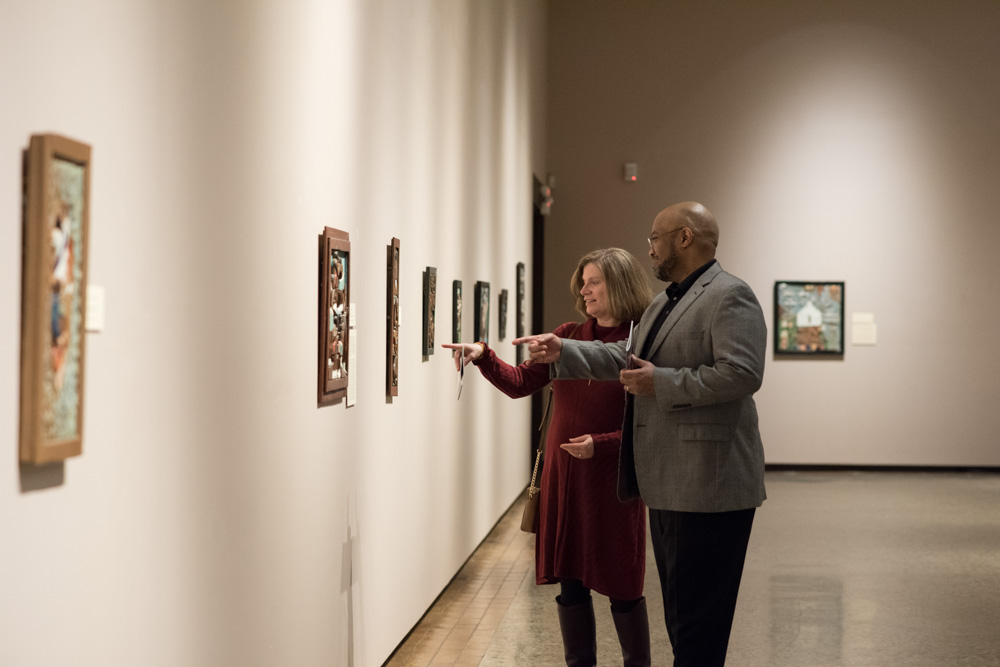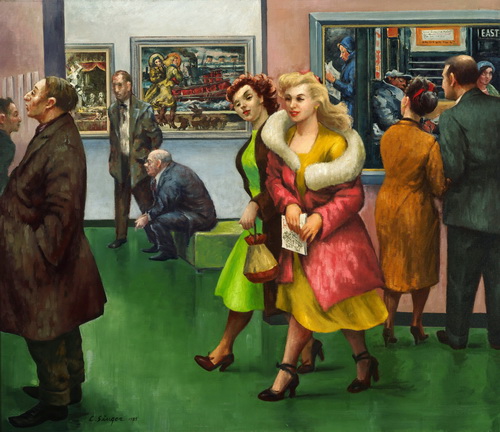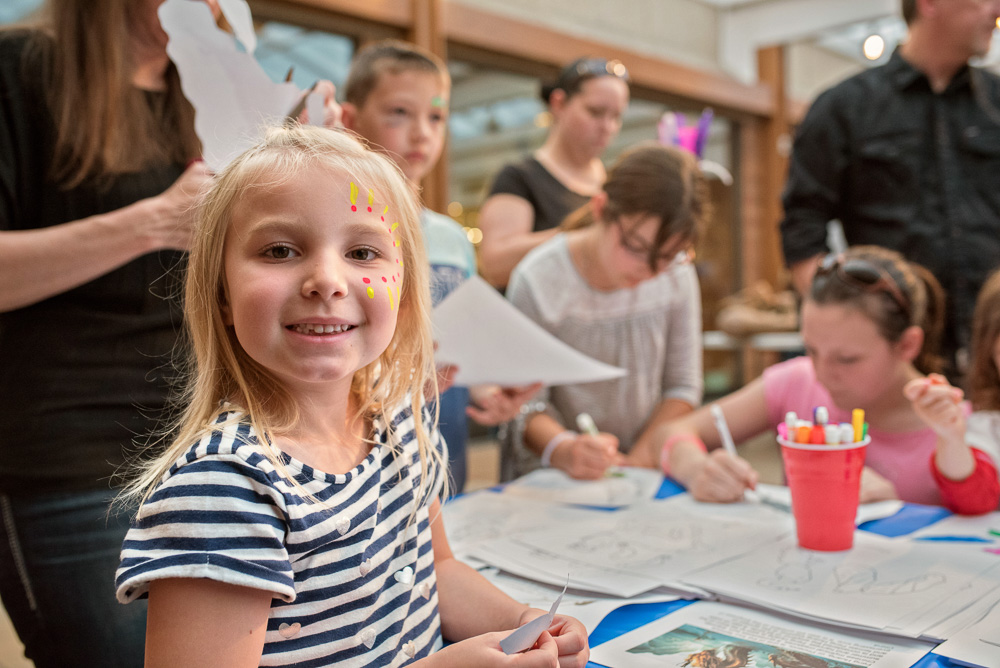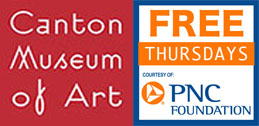Canton POS

Museum History

The Canton Museum of Art is one of Ohio’s premier museums for an exceptional visual arts experience and education!
The Canton Museum of Art (CMA) is recognized for its powerful programming of dynamic exhibits featuring celebrated artists from around the world and from the Museum's Collection. CMA exhibitions are enhanced with innovative education and outreach programs, including local, regional, and statewide collaborative projects bringing together schools, companies, and various community groups for interactive and inspired learning through the visual and performing arts. Each year, area school groups visit the Museum for free guided tours and for exhibition-related workshops. CMA also offers art classes in its School of Art, for all age groups in diverse mediums such as ceramics and painting. CMA is accredited by the American Alliance of Museums (AAM), recognizing the highest standards of the museum field.
From enjoying a special arts Family Day or discovering a treasure at the widely popular Christkindl Markt, to learning pottery making or escaping in an exhibition, concert, or lecture — there is always something new to discover, explore, and learn at CMA!
(Header Image: On The Terrace (detail), 1908/10. John Singer Sargent (American: 1856 – 1925). Watercolor on paper, 15 1/2 x 20 in. Canton Museum of Art Collection. From the James C. and Barbara J. Koppe Collection. Number: 997.4.)

Early Years
The Canton Museum of Art traces its roots to the Little Civic Art Gallery founded in a second floor room of the Canton Public Library in 1935, during the dark days of the Depression. A year later, the organization became known as the Canton Art Institute (CAI), and an active program of exhibits and educational programs flourished throughout the late 1930s.
In 1941, a building known as the Frank E. Case Mansion was donated and renovated to become the home of the Institute. This new space allowed for growing both exhibition and education activities, as well as the Institute’s collection (see Art Collection). During the next thirty years, the Canton Art Institute became a focal point for all the arts in Canton. Affiliate organizations such as Canton Fine Arts Associates began serving the Institute as both volunteers and fund raisers. The Case Mansion also provided a home for the offices of the Canton Symphony, as well as facilities for the Madrigal Singers, Canton Chamber Music Society, and the Players Guild Theatre.

Move to the Cultural Center for the Arts
In 1969, funded by a grant from the Timken Foundation, construction began on the new Cultural Center for the Arts, which would provide a new state-of-the-art facility for the CAI and many other arts organizations in Canton. The institute moved to the Cultural Center in 1971, and here began a program of larger exhibits and expanded art classes with the Canton City Schools. Two new affiliate organizations, The Museum Guild and the Canton Ceramic Artists Guild, were founded to help the Museum in its work. In the late 1970s, the Institute received full accreditation from the (now) American Alliance of Museums (AAM).

Evolution of Exhibitions, Programs & Collections Interest
Throughout the 1980s, CAI presented many popular exhibitions including an Andrew Wyeth Ohio premiere show, a Goya exhibit, and two successful exhibitions of Ohio’s quilts and a commemoration of the Statue of Liberty’s centennial. Two major exhibitions defined the end of the 80s and foreshadowed collection and exhibition moves to follow later: Game Day: Men of the NFL, was an original show from watercolorist Merv Corning and paid tribute to the heroes of the game and to Canton, birthplace of the NFL and home to the Pro Football Hall of Fame; Clyde Singer’s New York showcased the great Malvern, Ohio, painter’s scenes of Manhattan and his importance in both oil and watercolor mediums that were growing in the collection.
Commemorating its 60th Anniversary in 1995, the occasion was marked with a new identity as the Canton Museum of Art (CMA). That same year, CMA presented the exhibition George Luks: Expressionist Master of Color – The Watercolors Rediscovered, which further defined the Museum’s interests in American watercolor and its place as an artistic movement. The 1997-98 season ranks among the most successful in the Museum’s history with over 62,000 people attending the run of Norman Rockwell’s America and The Nazi Olympics – Berlin 1936.
Moving into the 21st Century brought the presentation of several major exhibitions such as Andrew Wyeth: The Helga Pictures, Bart Walter: The Soul of Africa, and Turkey River: Native American Art of the Ohio Country. In 2003, a large public sculpture, Morning Breeze by Jerry Peart, was installed near the entrance to the Museum on the grounds of the Cultural Center for the Arts. This mammoth work provided an exclamation point to the revitalization efforts in Downtown Canton and helped to further identify the Museum as a home of art and creativity.
That same year, the Museum produced the original exhibition In A Clear Light: The Triumph of Ohio Watercolor Painters, 1880-1967, which traveled to Springfield Museum of Art, and was co-curated by Bill Robinson of the Cleveland Museum of Art and CMA curator Lynnda Arrasmith.
At the same time, ceramics – also growing within the CMA Collection – took on more of a focus in exhibitions. Noted artists Karen Karnes and Paul Soldner were featured in original shows curated by CMA, as well as a centennial exhibition featuring Viktor Schreckengost. Later, CMA produced the original Form, Figure & Function: Contemporary Ohio Ceramics, created in conjunction with the Springfield Museum of Art, which featured acclaimed Ohio ceramic artists as well as a regional / national symposium. These exhibitions and events enhanced the Museum’s connections within the ceramics world, helping to advance both exhibition and collections initiatives.

Clyde Singer’s America, Kimono As Art Shine a National Spotlight
In its 2008 – 2009 season, CMA received major attention and crowds of more than 57,000 visitors through to major exhibitions. Clyde Singer’s America was a collaboration and co-exhibition with the Butler Museum of American Art, and received critical acclaim. Kimono As Art: The Landscapes of Itchiku Kubota created a major event throughout Canton and the surrounding region. Presented through The Timken Foundation and co-exhibited at San Diego’s Timken Museum of Art, the exhibition marked major collaborations and partnerships for arts events throughout the city and Stark County, garnering national attention and a spotlight for the Museum on the national stage.
Toward Our 90th Anniversary in 2025: Engage, Educate & Enrich
The Canton Museum of Art is in the midst of the transformation. The Museum’s leadership, enthusiastic staff, and a strong and supportive board of directors are bringing the community into the Museum and the Museum into the community like never before. New programs stress the placement of art education inside of classrooms throughout Stark County, as well as reaching out to use art for health and healing.
Exhibitions stress artistic excellence and inspiration – such as the recent The Saint John’s Bible (2013); The Legacy of Ferdinand Brader (2014); Scrimmage: Football in American Art (2017), which was featured on CBS This Morning Saturday; Elijah Pierce: An American Journey (2019); and Dancing in the Light: Masterworks from the Age of American Impressionism (2020-21) to name a few – that welcomes everyone to discover, to learn, and to be enriched through extraordinary art and interpretative programs.
That same excellence infuses the Museum’s growth and sharing of its collections – finding new ways to bring its collections to life and to engage both traditional and new museumgoers in conversations and learning experiences with art, which is vital to fulfilling our mission. This is also reflective of an intentional effort for collaborative programs that bring art and people together, enhancing visitor and participant experiences in ways never before possible (including digital engagement, expanded during the COVID-19 crisis and now a regular part of CMA’s programming).
The Museum’s vision stresses the importance of working as a contributor to economic development and cultural tourism, which means reaching new audiences through programming and marketing that promotes both a destination and an experience. We look to strengthen and sustain our community as a vital part of the life of the city.













